What’s Next? A resistance round-up of follow-up actions, ideas, and fall priorities.
The No Kings Day protests showed we’re closer to a critical mass of needed people power to reverse Trump’s assault on our democracy. A future national strike and other strategies could get us there.
No Kings Day protesters lined the streets of Arizona cities to deliver the national message.
Photo: Sky Schaudt/KJZZ
A massive, peaceful, repudiation of Trump’s autocratic moves
Across the country, the headlines from this Saturday’s No Kings Day nationwide protest captured the massive and peaceful turnout of Americans from all walks of life and corners to march against Donald Trump’s authoritarian policies. Over 2700 events took place to protest Trump 2.0, organized by a broader range of groups than in June 2025, the last No Kings nationwide protest. The overall estimate ranges from over 5 million to 8.2 million people, based on crowd-sourcing counts by a number of organizations including Strength in Numbers, which partnered with the Atlanta-based science newsroom Xylom to count attendance.
In New York, over 100,000 people filled Times Square for blocks, according to an official police count, while in Chicago, the march was over twenty blocks. No Kings Day organizers also upped their initial count from 7 million to 8 as more smaller cities and towns sent in reports on local events. It now marks the largest single-day protest since the 1970s.
Media stories also captured the impressive showing in GOP strongholds and red states, which has led to a collective agreement that the US resistance has evolved beyond its initial lefty stripes to include a broader mainstream of Americans. It also showed that the message of courage and principled nonviolence has caught on, as organizers urged participants to avoid reacting to pro-Trump individuals and trolls who might turn out hoping to provoke conflict.
No Kings Day rally in Washington, DC, was a big, festive event.
Photo: Tyrone Turner | WAMU
In response to Trump’s attempts and threats to deploy national guard troops to stop possible violence, No Kings marches were joyous events, marked by the presence of people in large, colorful inflatable animal costumes, from bright green frogs that have become the signature of resistance to ICE in Portland, to scores of unicorns and fanciful creatures of all kinds. They captured an overall note of defiant humor that was also visible on tens of thousands of hand-written signs. A few incidents of violence were reported, coming from the MAGA camp, including a man who drove a white pickup truck into a grassy area where protesters were seated in Jackson Township, Ohio, injuring a 53-year-old woman before driving off. (Police are searching for him now.)
For his part, a clearly-peeved Trump set a new low with the release of a 19-second AI-generated video on his Truth Social channel hours after the nationwide protests that showed him as a crowned “King Trump” piloting a jet fighter who bomb-drops shit onto protesters marching below in a space that resembles Times Square. They include the recognizable face of 23-year-old leftist influencer Harry Sisson. Critics decried Trump’s resorting to juvenile bathroom humor, and many felt it further debased the office of the American presidency. Initial widespread incredulity about the video also led to fresh concerns about Trump’s mental faculties. Many mainstream media declined to cover the incident at first, though USA Today, among others, labeled it a childish tantrum that revealed how threatened Trump was by the massive repudiation of his presidency. Under fire, GOP House Speaker Mike Johnson defended Trump, saying his use of the foul deepfake AI video was “satire”.
Trump’s bizarre AI-generated deepfake video in which he drops shit on American protesters marks a new low of public behavior for an American president and generated widespread denunciation by many and renewed criticism that he is mentally unfit for the presidency.
Image: Truth Social
What’s Next?
Below, I’ve consolidated post-No Kings updates and news links about a number of priority issues and battles that face us in the period ahead. The resistance movement is feeling some momentum, so now’s the time to take bold action and organize next steps.
San Francisco No Kings Day protesters at Ocean Beach spell out their demand to stop Trump – and vote Yes on Proposition 50, the Election Rigging Response Act, which will redraw California’s election maps to counter GOP gerrymandering efforts in Texas and across the country.
Photo: Laure Andrillon | AFP via Getty Images
We’re at over 2 percent now; the goal is 3.5 percent
The Saturday turnout reflected an increase of two million participants since the last big No Kings nationwide protest in June. Many participants are excited because we’re now much closer to the oft-cited marker of effective nonviolent civil resistance known as “the 3.5 percent rule.” It reflects a finding by Harvard political scientists Erica Chenoweth and Maria Stephan that no government or revolution has withstood a challenge when 3.5 percent of its population was mobilized against it during an observable peak event. The duo analyzed civil resistance campaigns from 1900 to 2006 and also found that nonviolent movements produced more durable results than violent ones. A count of 7 to 8.2 million marching on No Kings is roughly 2 percent of the US population, based on the 2025 census. Looking ahead, 3.5 percent spells 11 million people – another 4 million to go – which is already being touted as the goal to reach in the next nationwide No Kings protest.
Of course, getting people into the streets is only part of the challenge; transforming them into an effective strategic movement is another. But the numbers do matter. Now comes the next step to help get to the magic 3.5 percent while taking actions to stop unfolding attacks this fall. One strategy is to organize people to prepare for a national strike. Another is to focus on local electoral organizing, with an eye to the 2026 mid-term elections, when Democrats have a chance at recovering a majority in Congress.
The growing call for a national strike
The call for a US national strike has existed for years, and many civil society groups have pushed the idea forward. The current goal is to call a strike once 11 million people have been mobilized to take to the streets – that magic 3.5 percent number. Presently, US labor organizers have already called for a “general strike” in May 2028 led by unions. That is different from what some call a “social strike” that involves non-union groups and people outside of organized labor.
Some also call it a “public strike,” and such national actions can take different forms and engage different sectors. But 2028 is too far away, contend many activists, who have been pushing union leaders to shift their general strike date to next year, given the urgency of mobilizing against Trump’s attacks on the federal workforce and workers’ rights. Many groups, larger and smaller, are starting to echo the call for a US national strike that will provide a different show of muscle to the resistance movement.
A number of groups who are advocating for a national strike are stepping up their advocacy, including Mobilize Us, The General Strike, the Action Network, and others, and they’re freshly encouraged by the No Kings turnout. They have set up online recruitment forms for people to sign “strike cards’” pledging their commitment to a future national strike. The General Strike was started by two Brooklyn residents back in 2022, as they eyed the possibility of a Trump return. Once they have accumulated 11 million strike cards, they’re ready to put a strike plan in effect. As of April, their site alone had registered 300,000 people who’d signed strike cards and were sharing it with others. More are sharing it now. That’s an action you can take now.
Chicago Mayor Brandon Johnson joins the call for a national strike.
Photo: Daniel Boczarski | Getty Images
A Call to Strike As Trump hosts a gathering of his richest benefactors
The demand to organize a national strike gained momentum on No Kings day when Chicago Mayor Brandon Johnson added his voice to the call to strike and fight “tyranny” during a rally speech. Brandon has been a powerful force in resisting Trump’s deployment of federal troops in Chicago. Aiming his ire at the “ultra-wealthy”, Brandon said, “We are going to make them pay their fair share in taxes to fund our schools, to fund jobs, to fund healthcare, to fund transportation.” And he asked the crowd, “Are you ready to take it to the courts and to the streets?” Their response was enthusiastic and loud. His announcement generated a lot of media and social media coverage, with many saying the time is ripe to organize a strike for 2026, and to use the call to strike to get to the magic 3.5 percent number.
Brandon’s call also came on the same weekend that top tech leaders and GOP mega-donors joined Trump at a Palm Beach fundraiser for his $250 billion dollar gilded White House ballroom project. Representatives from Apple, Amazon, Booz Allen Hamilton, Coinbase, Comcast, Google, Lockheed Martin, Meta Platforms, Palantir, and T-Mobile ponied up big money; so did crypto entrepreneurs Tyler and Cameron Winklevoss, seeking to stay in Trump’s good graces as his administration moves to pass crypto policies that will make the 1 percent even wealthier. As the Wall Street Journal first reported, Trump told his audience that there are no zoning laws to prevent him as president from doing “whatever he wants” with the construction. On October 20, demolition crews were at work tearing apart the East Wing of the White House as a step toward building his Marie Antoinette fantasy ballroom — despite Trump’s promises that the addition would not interfere with the existing structure.
Demolition of the White House is underway in preparation for the addition of a royalist ballroom. Americans have expressed outrage at the Trump’s demolition of “the people’s house” after promising the building would be untouched by the addition.
Photo: Washington Post
Trump also shared his plan for a giant triumphal archway (“Arc de Trump”, some dub it) across from the Lincoln Memorial and over the Potomac River, connecting Virginia and the District of Columbia – another billion-dollar pet project modeled after the Arc de Triomphe in Paris. While No Kings marchers flooded the streets of DC, Trump regaled his wealthy patrons with his Marie Antoinette royalist visions of Versailles glory.
Occupy protesters leading the national strike call, Oakland, CA 2011.
Photo: Occupy Oakland
What kind of strike?
The US has a history of many kinds of strikes, but the closest it’s come to a national general strike was in 1886, when a Chicago strike for an eight-hour work day expanded to other locations. There were also general strikes in Seattle in 1919, in Oakland and Stamford, Connecticut, in 1946. More recently, the Los Angeles and New York chapters of the national Occupy Wall Street movement organized a general strike in May 2011 for “a day without the 99 percent general strike, and... no work, no school, no housework, no shopping.” Thousands of people participated.
Social strikes can refer to a range of mass actions in which people flex their power by withholding cooperation from, or disrupting the operation, of society. It applies not only to an employer or the workforce, but also to a social structure, regime, or even a social practice. The group Chenoweth and Stephan work with, Waging Nonviolence, has catalogued myriad examples of different strikes and forms of popular action and civil resistance around the world. They include now-famous “women’s strikes” or “sex strikes” in which women withhold sex to achieve a social or political goal, one known as a Lysistratic nonaction, based on the ancient Greek play Lysistrata by Aristophanes, in which women protested war with a sex strike. In Kenya, women staged a week-long sex strike in 2009 to pressure politicians to stop fighting; in Columbia, women staged a successful “crossed legs” protest to get a needed road built. In the US, actress Alyssa Milano in 2019 called for a sex strike to protest anti-abortion laws.
Right now, the call is for a broad social strike, involving the widest swath of Americans who agree about one thing: Donald Trump must go, and his government must reverse the attacks on federal funding and programs that have led to mass layoffs of government workers and a shredding of the safety net.
Mamdani’s victory has been inspiring young progressives across the US since he won the Democratic primary in June.
Photo: Julius Constantine Motal | The Guardian
The Mamdani effect – time to “run for something”
Since his surprise win in the New York Democratic primary on June 24, Zohran Mamdani has inspired a surge of interest among inspired progressives, including youth. He also shocked Republicans because he won as a Democratic Socialist candidate who drew support from a broad swath of New Yorkers including in conservative districts, who were drawn to his promise to freeze rents and provide free bus transportation – among key campaign promises to address the affordability of living in the Big Apple.
After his victory, over 10,000 people signed up with Run for Something, a progressive group that is recruiting and training young people and newcomers to politics to pursue their interest in running for public office. Run for Something is just one of a growing number of progressive outfits that are seizing the momentum to build on what’s known as the Mamdani effect. His charisma and campaign have inspired many who have felt disenchanted by politics but are inspired by his straight talk and his appeal to ordinary people via man-in-the-street social media videos. His appeal has drawn fans from across the political divide, including younger people turned off by the Democratic party.
Run for Something was founded in 2017 (on the day Trump was first inaugurated) by a Brooklyn resident, Amanda Litman, and Ross Morales Rocketto, a political campaign veteran. Today, Litman remains its president. She previously ran Hillary Clinton’s email campaign (the other emails, as she tells reporters), and has political chops from other campaigns including managing Chris Christie’s digital campaign. Litman is among political activists who believe that we need to build a base of progressive leaders at the very local level, something the Christian right began doing many years ago. That means school board races, city councils, and up. As the group states in recruitment materials, “Thinking about running for local office? We want to talk to you. We don’t care about your resume: If you’re progressive and you care about improving your local community, we want to help you run.” In Litman’s view, there’s both an immediate and longer-term mandate for progressives to regain a voice at the local and state levels.
Run for Something is credited with helping raise youth enthusiasm for Mamdani and is actively pushing to put other would-be Mamdani’s in place, while challenging current Democrats to adopt progressive platforms and speak out strongly against Trump’s policies.
The growing progressive resistance and Mamdani’s win have also encouraged Democratic party donors, according to new reports, though donations still lag behind overall GOP fundraising, according to a recent Politico analysis. Many are focusing on the critical contested primaries that loom ahead, including five Democratic primary battles that are viewed as a litmus test of the ability to stop Trump. These are Maine, Michigan, Tennessee’s 9th District, the California governor’s race, and New York’s 17th District primary. All of these represent battles that are calling for progressive support and volunteers to help educate voters about what is at stake next year and in the mid-term election, which is to wrest control from MAGA extremists and a cowed GOP leadership who now control Congress.
Voting right activists gather outside the Supreme Court in Washington, D.C., on Oct. 15, 2025, during legal arguments about the Voting Rights Act.
Photo: Eric Lee/Bloomberg via Getty Images
All eyes on the Voting Rights Act case
There’s more to be done, of course – much more. No Kings organizers hope local groups will organize protests against big-ticket items that are looming this fall, including the upcoming Supreme Court hearing on Section 2 of the Voting Rights Act. The case, Louisiana v. Callais, could end race-conscious redistricting, which has existed for decades. Conservatives argue that the Act violates the 14th amendment’s equal protection clause. The case “could have profound implications for the Voting Rights Act and fair representation nationwide,” said Sophie Lin Lakin, director of the ACLU’s Voting Rights Project and one of the attorneys involved in the case. If the Supreme Court rules in favor of the conservative argument, it will have national implications and will change the course of next year’s mid-term elections. It could give the GOP 19 additional House seats. The case comes on the heels of hotly contested gerrymandering and redistricting battles in Texas and elsewhere, including in California, where Governor Gavin Newsom has put the issue to a ballot vote with CA Proposition 50.



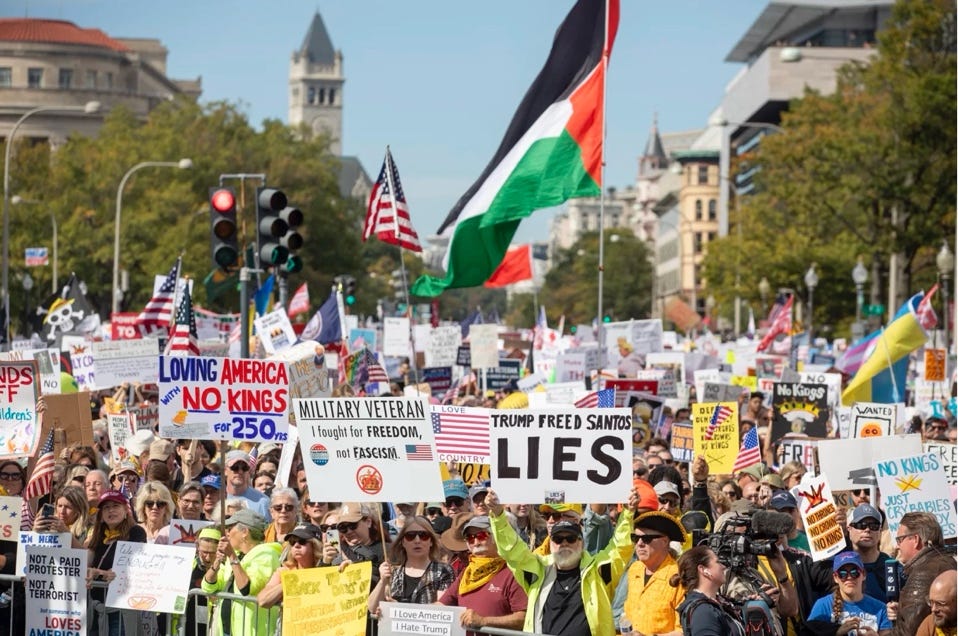

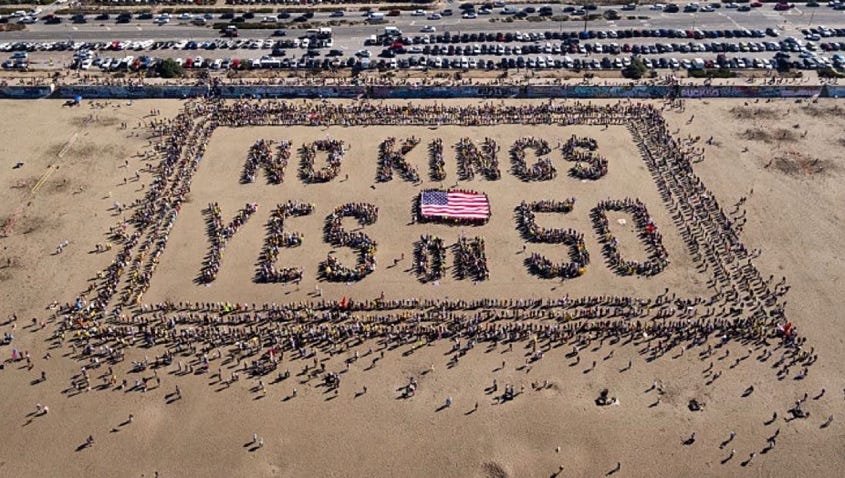
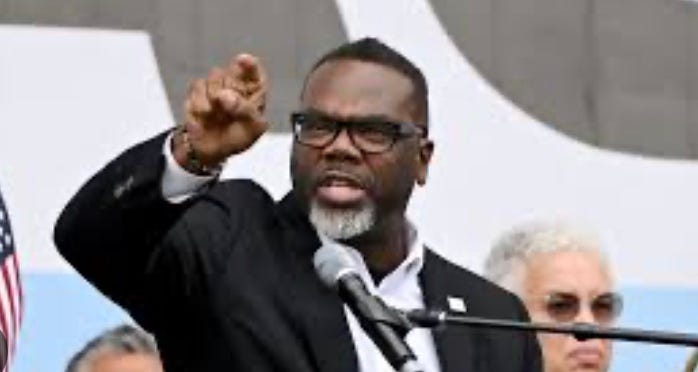

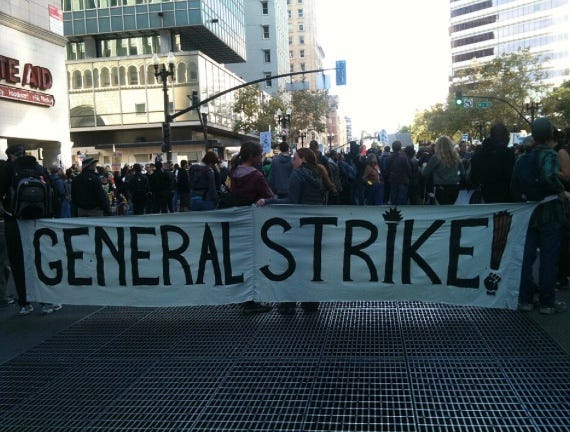

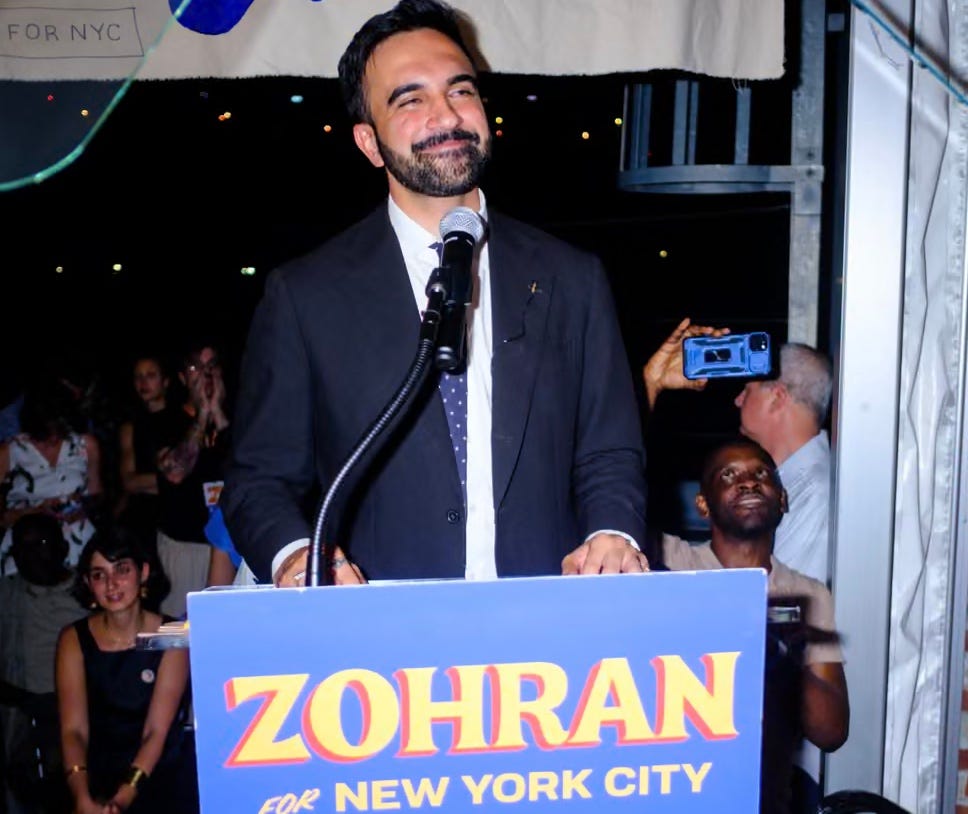

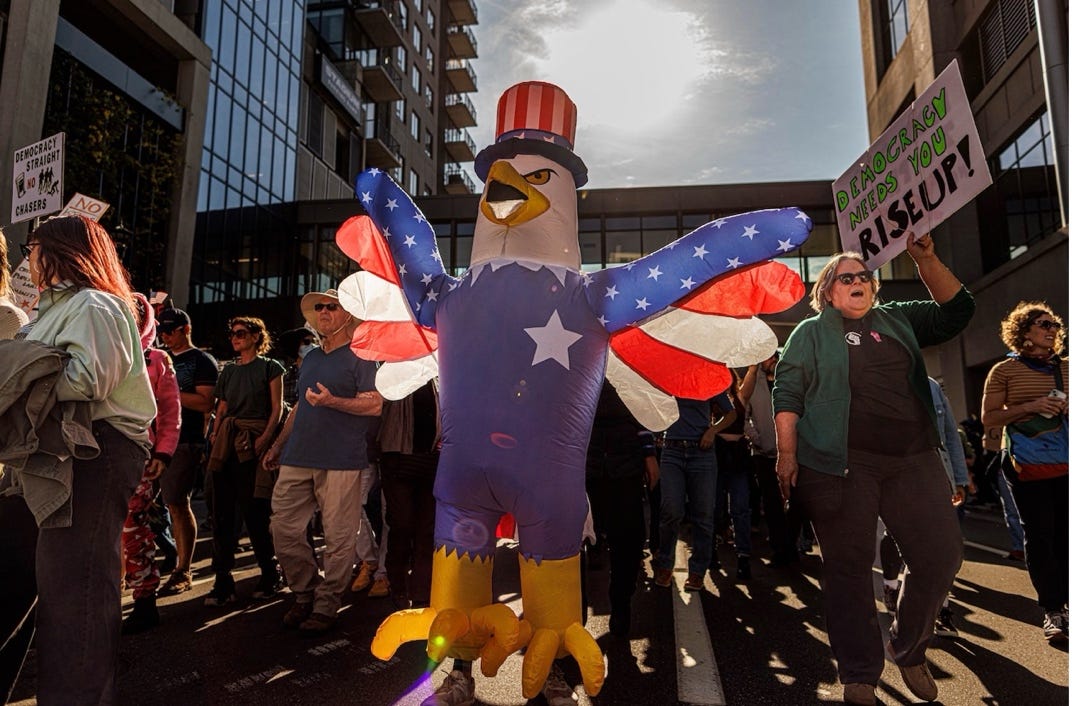
Rob Peter to Pay Paul Politics
https://torrancestephensphd.substack.com/p/rob-peter-to-pay-paul-politics
Imagine if:
1. Religious leaders coalesce to refute this regime's anti-Christian ideology
2. Professional sports cancels all games
3. The entertainment industry (singers/actors/performers) refuse to show up
4. A nationwide boycott of all transportation
Imagine